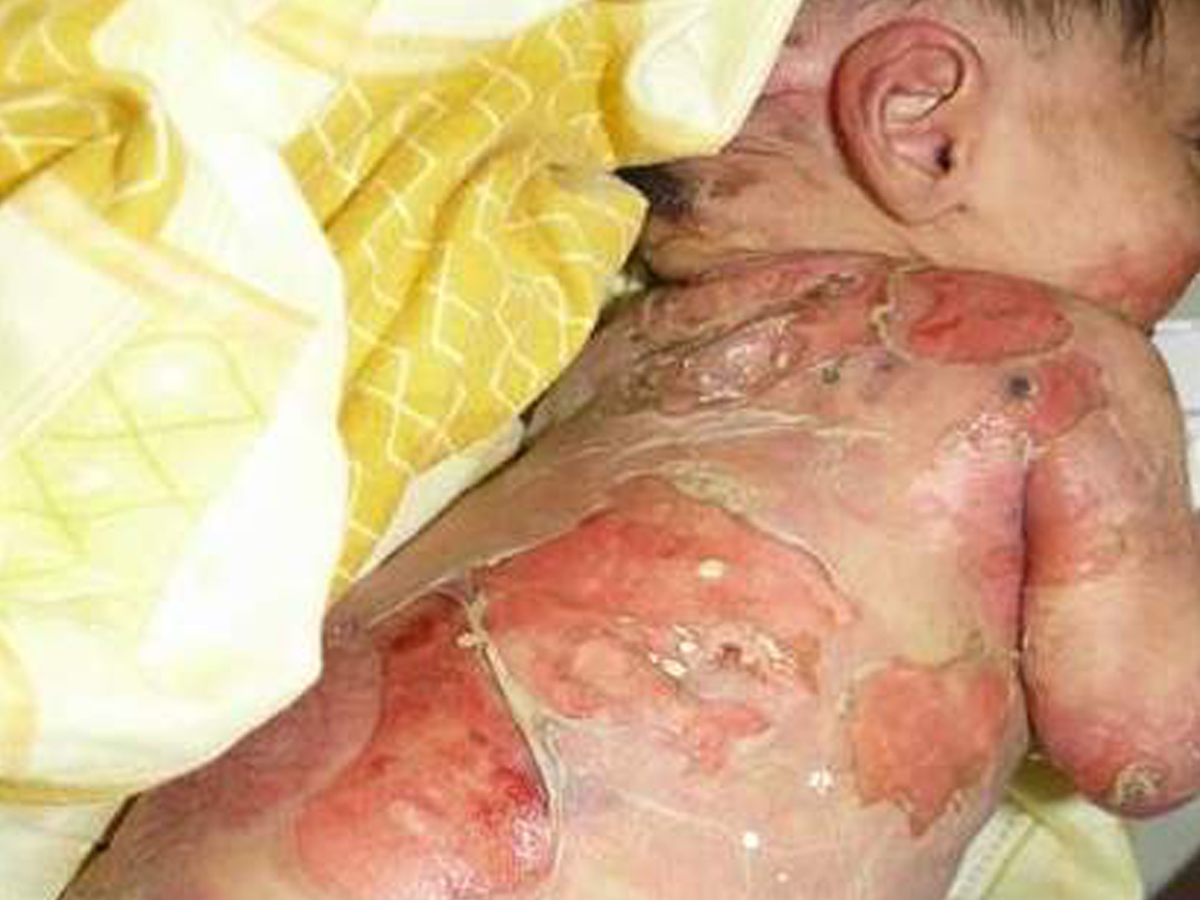Epidermolysis Bullosa: Types, Symptoms, Causes & Treatment
What are the types of epidermolysis bullosa?
Epidermolysis bullosa (EB) is a group of rare genetic skin disorders characterized by extremely fragile skin that blisters easily. There are several major types of EB, classified based on the level of skin layers affected:
- Epidermolysis Bullosa Simplex (EBS)
- The most common form
- Blisters occur in the upper layer of the skin (epidermis)
- Subtypes include EBS-localized and EBS-generalized
- Junctional Epidermolysis Bullosa (JEB)
- Blisters form at the junction between the epidermis and dermis layers
- Includes subtypes like JEB-Herlitz and JEB-non-Herlitz
- Dystrophic Epidermolysis Bullosa (DEB)
- One of the more severe forms
- Blisters occur below the basement membrane zone in the dermis
- Subtypes are dominant DEB and recessive DEB
- Kindler Syndrome
- A rare subtype caused by genetic mutation
- Characterized by skin blistering, poikiloderma, and other abnormalities
- Acquired Epidermolysis Bullosa
- Not an inherited form, but an autoimmune blistering disorder
The severity and characteristics can vary substantially even within the same EB type. Some forms involve blisters only on the skin, while others also affect the mucous membranes lining the mouth, throat, and other areas.
Early diagnosis and specialized supportive care from a multidisciplinary team is crucial for managing EB and preventing serious complications like infections, scarring, and disfigurement.
What are the symptoms of epidermolysis bullosa?
The main symptoms of epidermolysis bullosa (EB) involve the formation of extremely fragile blisters and erosions on the skin and mucous membranes. However, the specific symptoms can vary depending on the type and severity of EB. Common symptoms include:
Skin Symptoms:
- Blistering or erosions that occur with little or no friction/trauma
- Blisters that heal with scarring and milia (tiny white bumps)
- Areas of thickened, hardened skin over bony prominences
- Excessive skin shedding or sloughing
- Scalp erosions and hair loss
- Deformed nails
Mucosal Symptoms:
- Blisters inside the mouth, throat, esophagus
- Difficulty swallowing, chewing, speaking
- Blisters on the eyes, nose, genitals
- Scarring of mucous membranes
Other Symptoms:
- Excessive skin dryness and itching
- Stunted growth or failure to thrive
- Anemia due to intestinal blistering/bleeding
- Contractures and deformities of fingers, hands, joints
- Dental problems and cavities
- Involvement of internal organs in severe cases
Newborns with the most severe forms like Herlitz JEB may have widespread blistering present at birth. Milder forms may just involve blistering on the hands and feet initially.
The intense pain and risk of infection from the blistering and open wounds are major issues for EB patients. Proper wound care, nutritional support, and preventive measures are crucial parts of management.
What are the causes of epidermolysis bullosa?
Epidermolysis bullosa (EB) is caused by genetic mutations that result in abnormalities in the proteins that anchor the layers of skin together. The specific genetic defect determines the type and severity of EB.
The main causes are:
1) Inherited genetic mutations
Most forms of EB are inherited in an autosomal dominant or autosomal recessive pattern.
- Autosomal Dominant: One defective gene copy inherited from a parent causes the disorder.
- Autosomal Recessive: Two defective gene copies (one from each parent) are required.
2) Defects in anchor proteins
EB arises from mutations in genes that provide instructions for making proteins that anchor the epidermis (outer skin layer) to the dermis (inner layer) or the dermis to underlying structures.
Key proteins affected include:
- Keratins – Important structural proteins in the epidermis
- Laminins – Help anchor the epidermis to the dermis
- Collagens – Provide strength and structure in the dermis
3) Types of genetic mutations
- Missing or non-functional anchor proteins
- Defects that weaken or disrupt the anchoring structures
- Abnormal production or assembly of anchoring fibers
The specific genetic mutations disrupt the integrity of the skin layers, leading to extremely fragile skin that blisters with little friction or trauma.
4) Acquired EB
In rare cases, EB can be acquired, caused by an autoimmune reaction against proteins that anchor skin layers together. This is not an inherited form.
Most cases of EB are present from birth and are caused by inheriting one or more mutated genes from parents, even if they didn’t have EB themselves.
What is the treatment for epidermolysis bullosa?
There is no cure for epidermolysis bullosa (EB), but treatment aims to prevent and protect against blistering, promote wound healing, and manage complications. A multidisciplinary approach is required involving different specialists. Common treatments include:
Wound Care:
- Meticulous cleaning and dressing of blisters/erosions
- Antibiotics for preventing/treating infections
- Non-adherent dressings and protective padding
- Topical antimicrobial creams
Pain Management:
- Over-the-counter and prescription pain medications
- Anesthetics for severe blistering/procedures
Nutrition Support:
- Special feeding tubes if blistering interferes with eating
- Nutritional supplements for deficiencies
Protecting Skin:
- Avoiding friction/trauma with soft padding
- Keeping nails trimmed
- Using lubricating creams/ointments
Surgery:
- Procedures to correct deformities, fuse joints
- Removing built-up scar tissue
- Hand surgery for severe hand deformities
Other Treatments:
- Physical/occupational therapy
- Dental care for enamel defects
- Psychological counseling
- Gene therapy (experimental)
Newborns may require IV fluids, temperature regulation, and special handling. Severe cases may need esophageal dilatation or amniotic membrane grafts.
Meticulous wound care is critically important to prevent infections, which are the leading cause of death in EB patients. Avoiding blistering through protective measures is also key.
While very challenging to manage, a comprehensive approach can greatly improve quality of life for those with EB. New therapies like protein and gene replacement are being researched.




